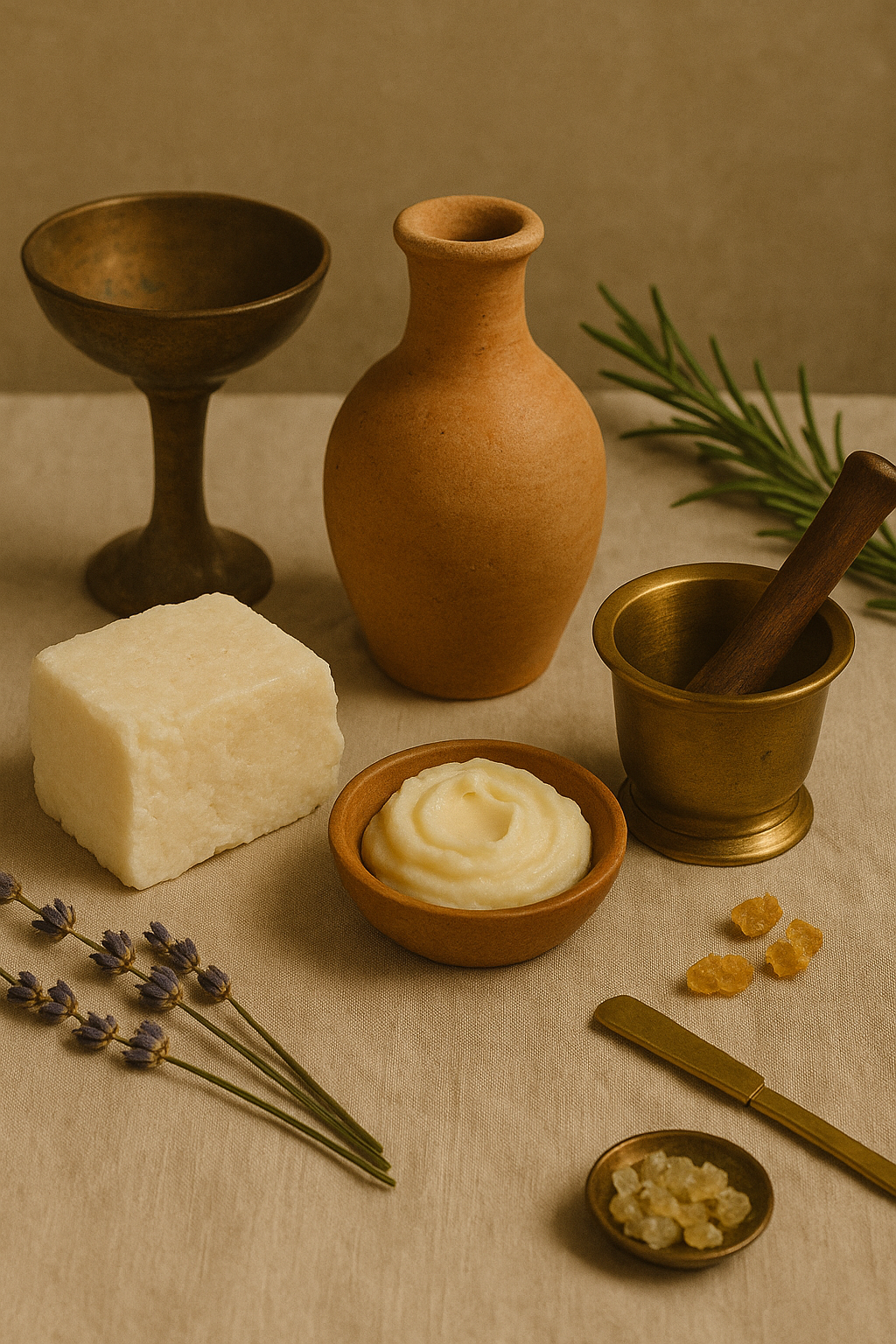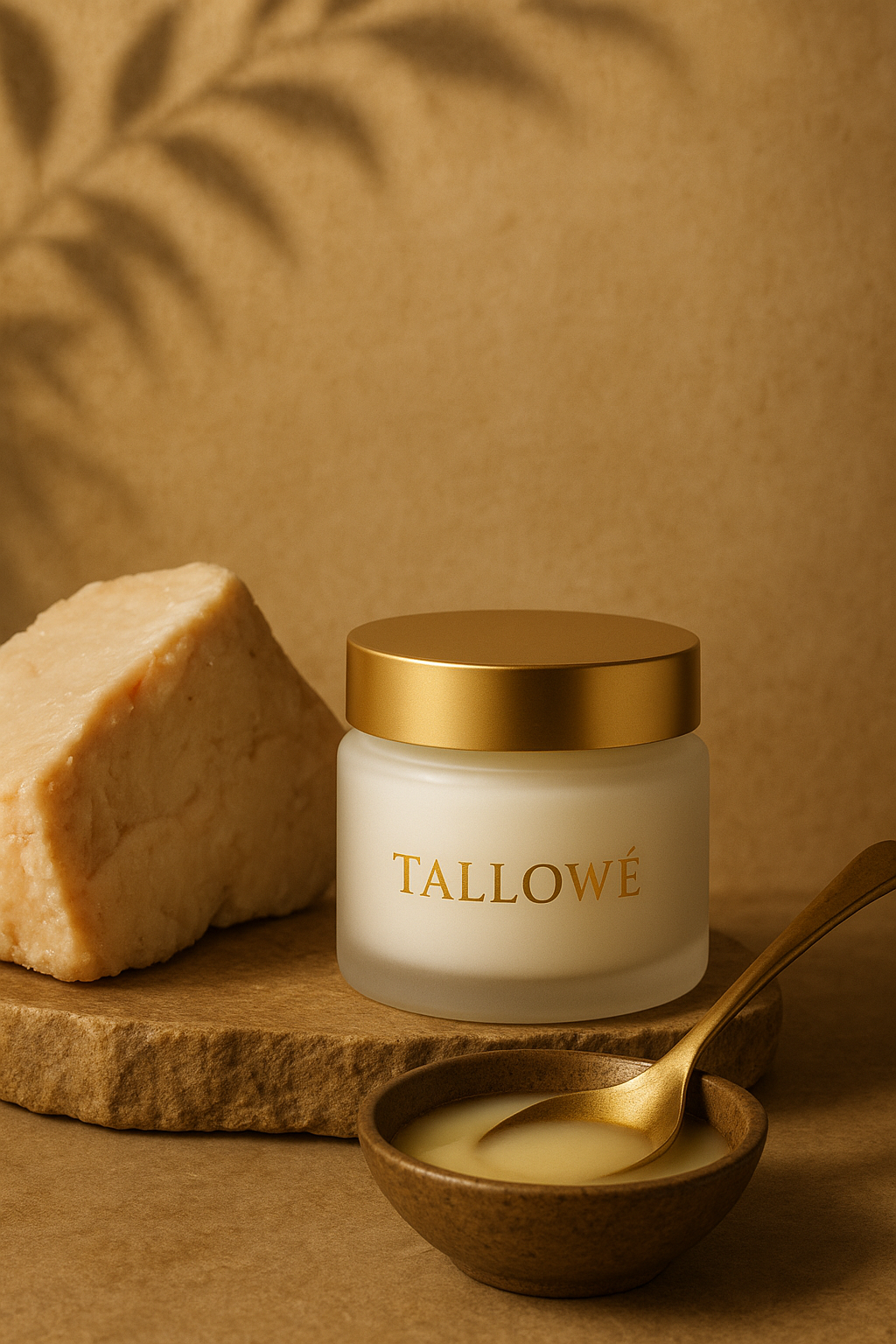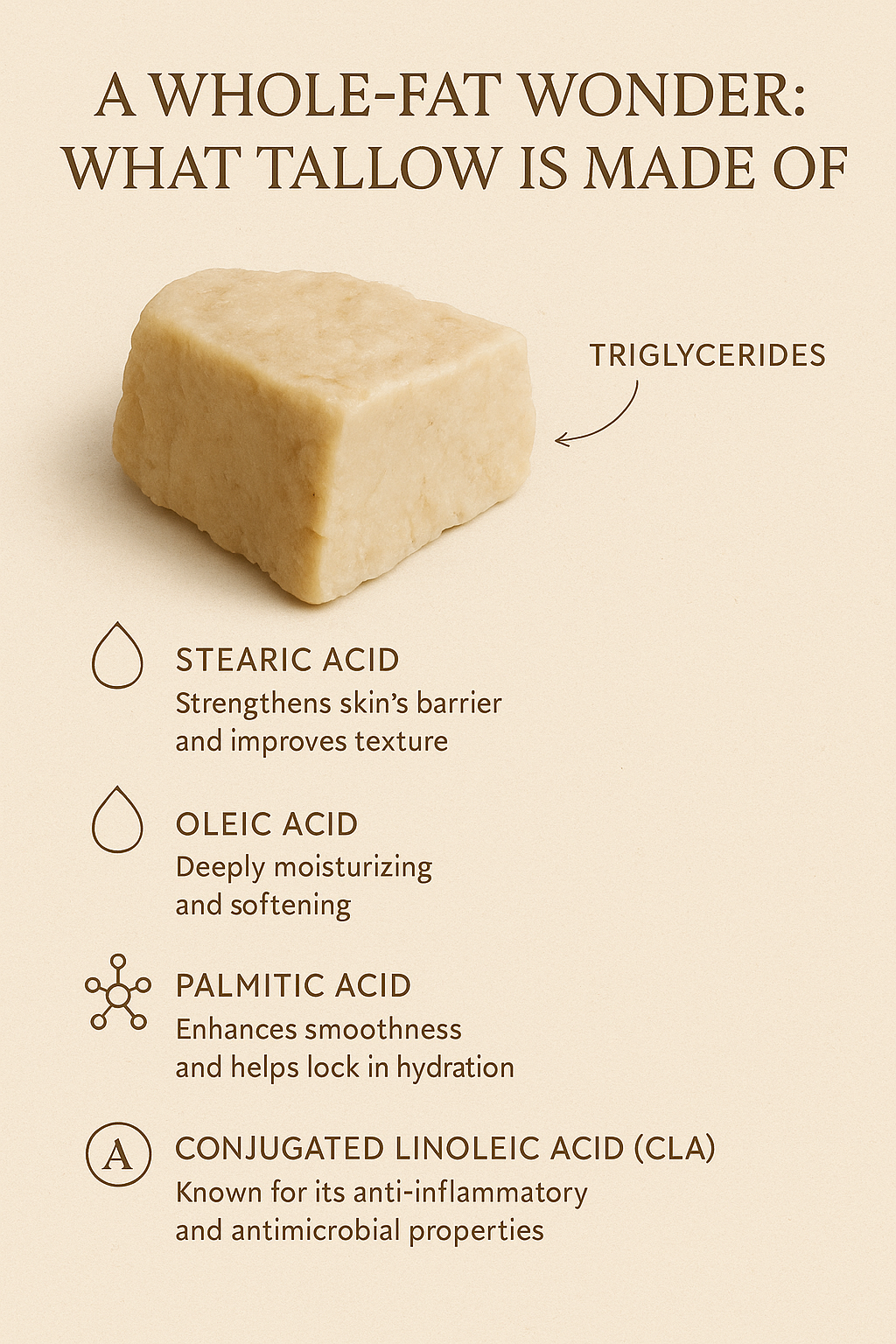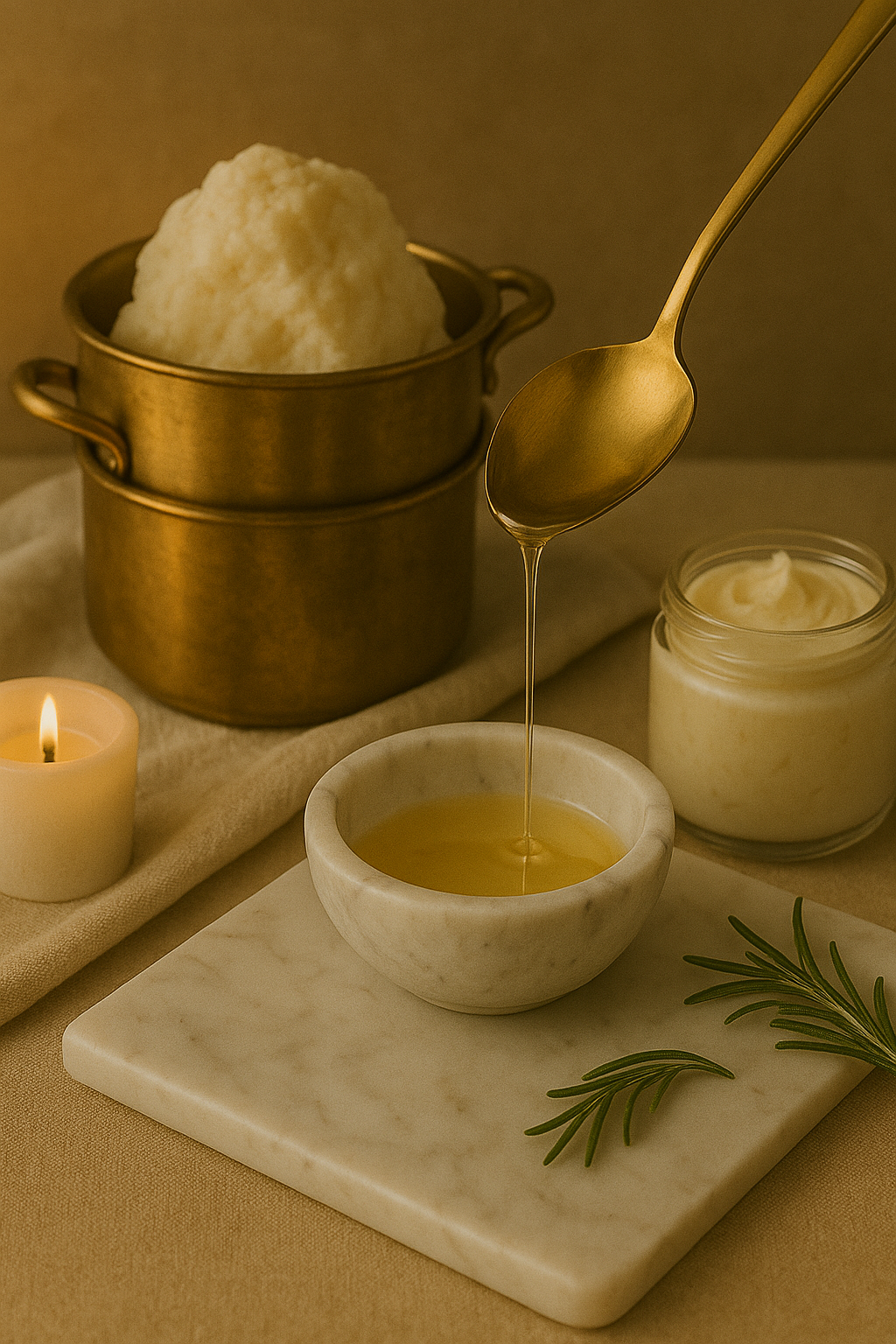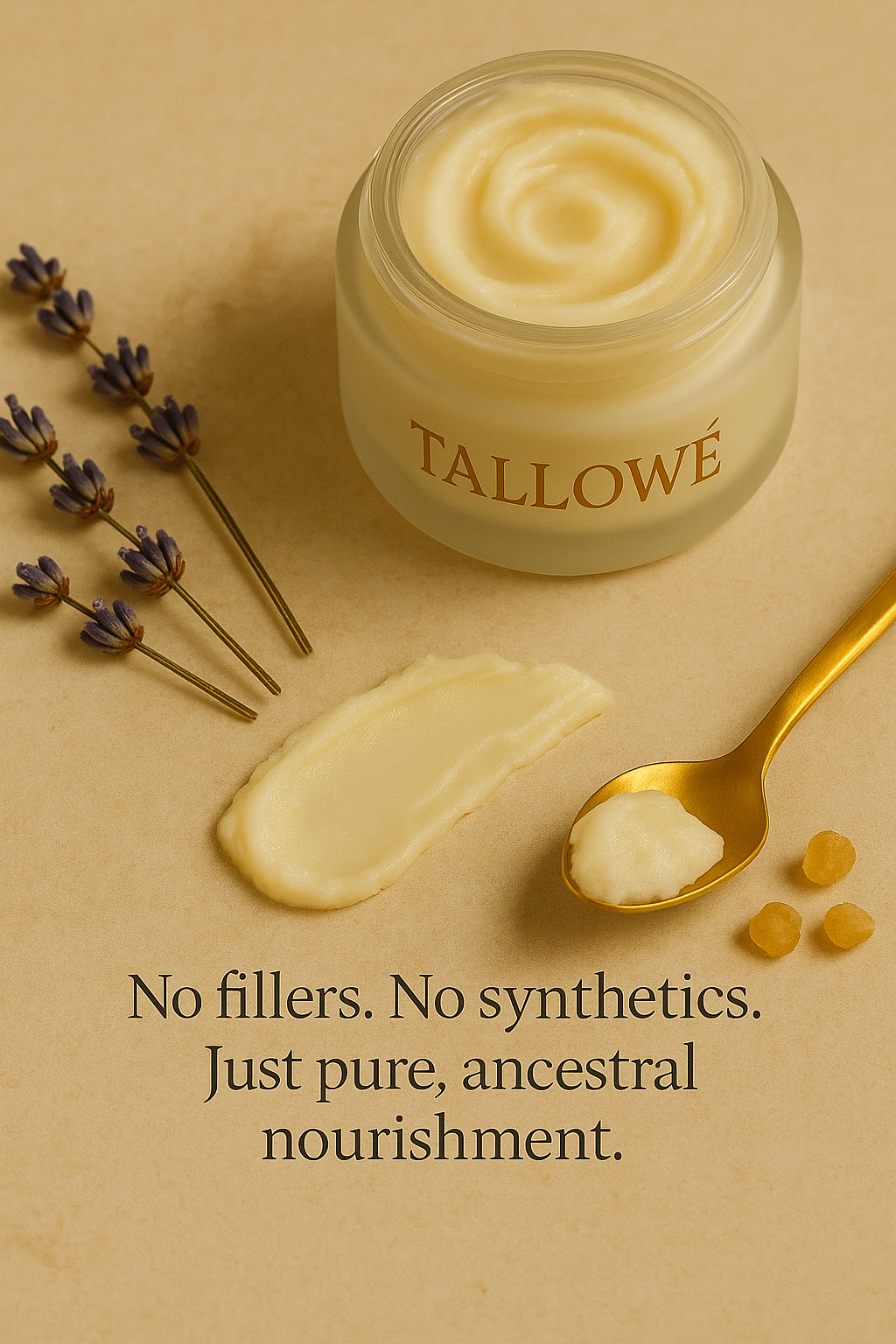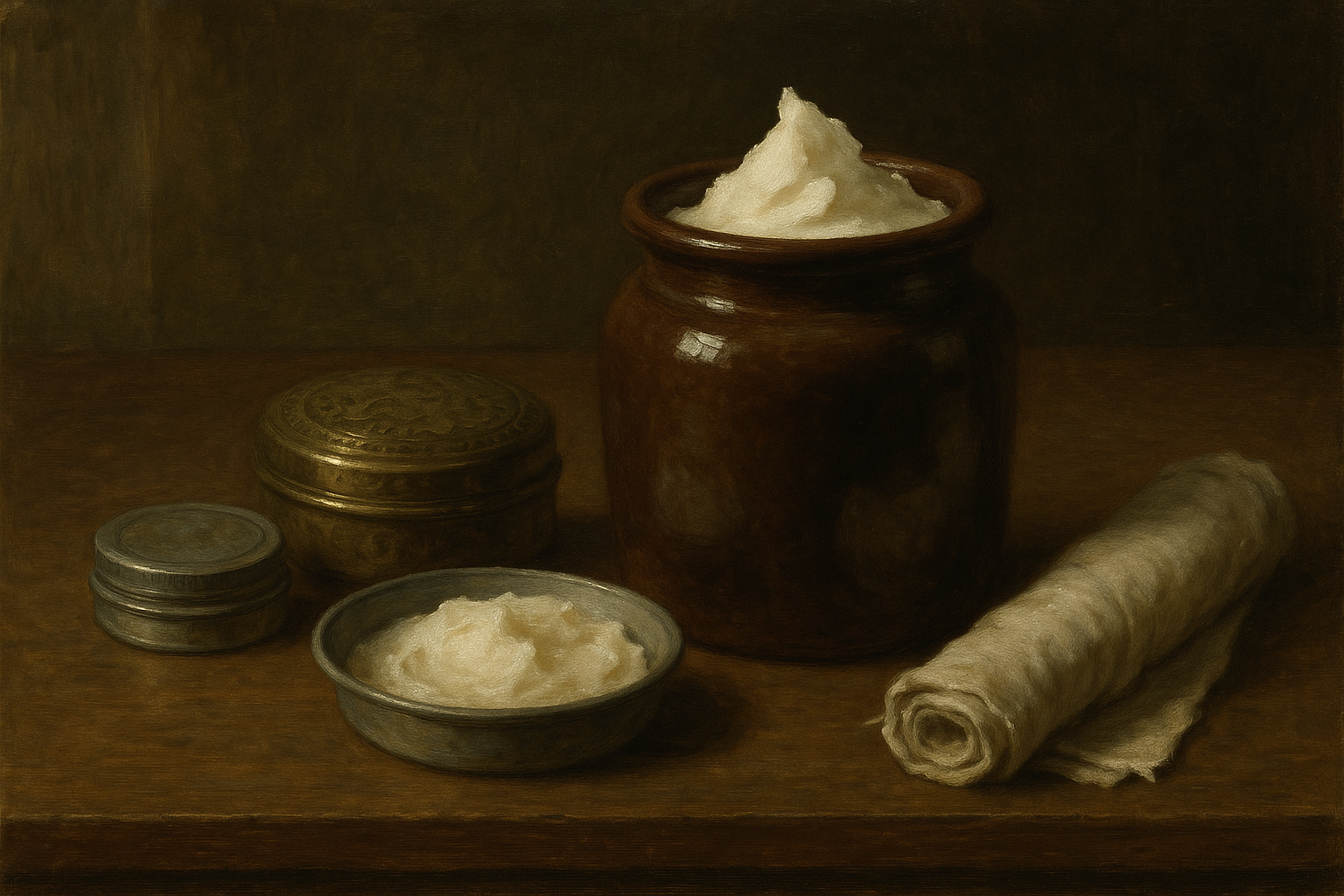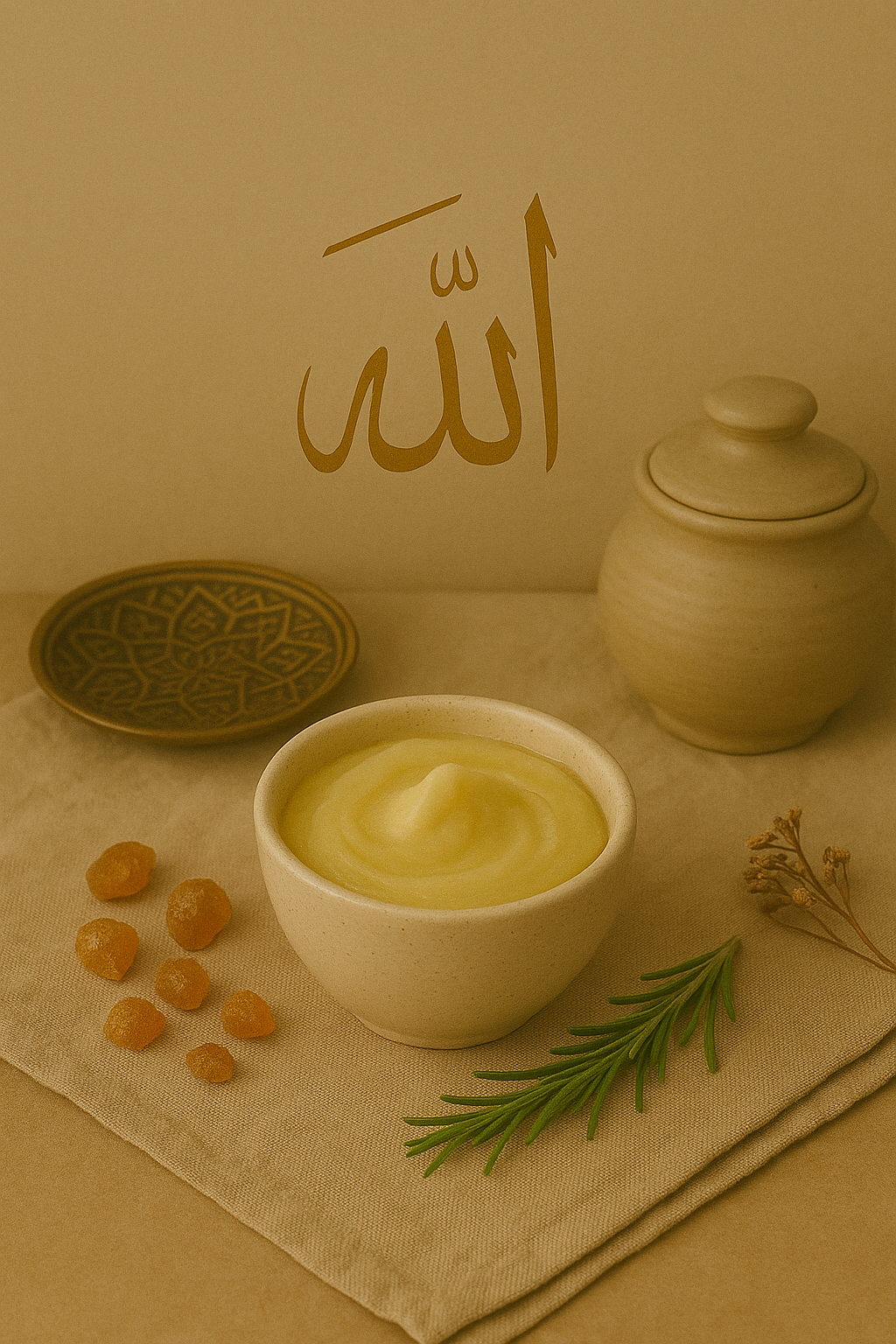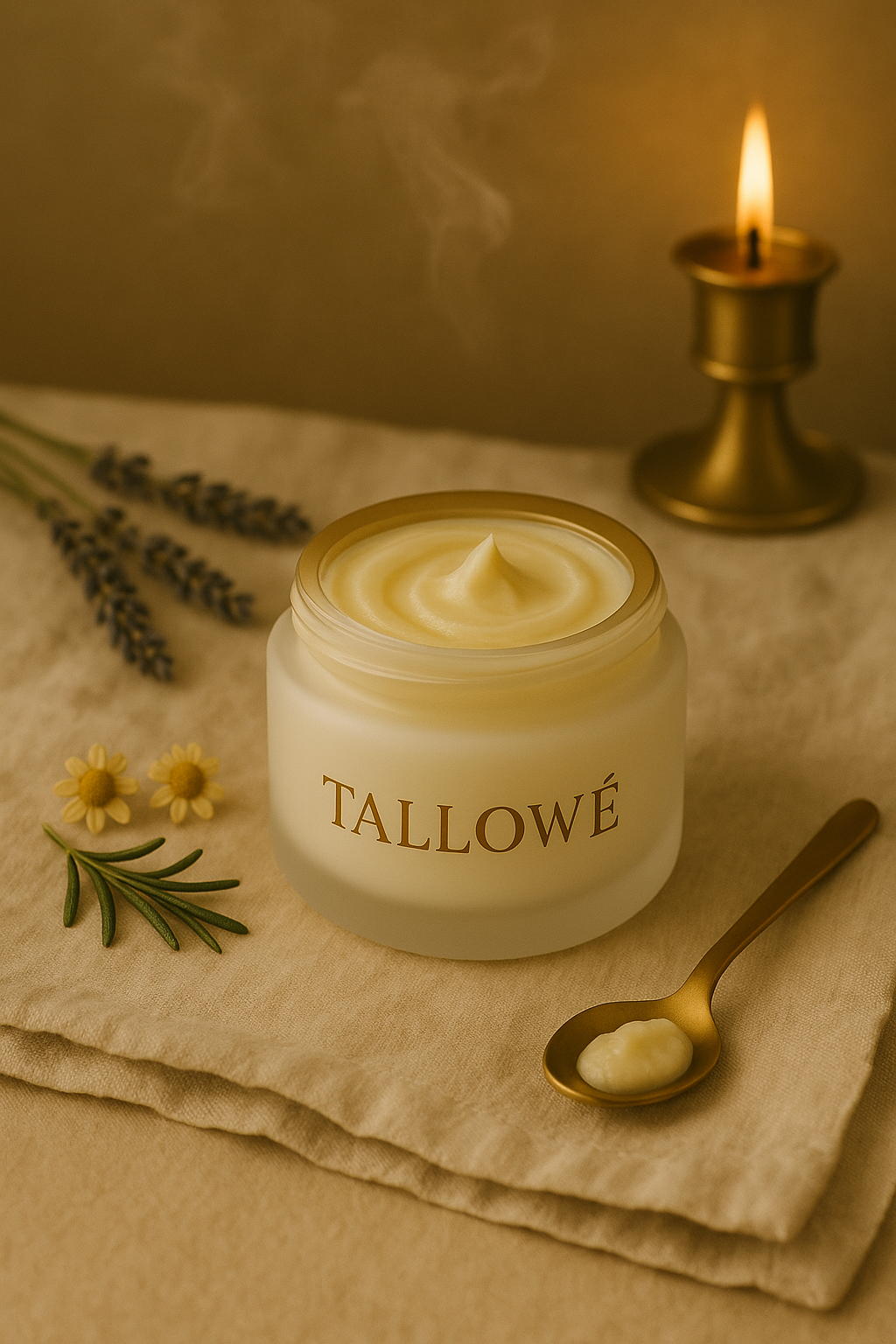What Is Tallow?
Tallow is one of nature’s most ancient and time-honoured skincare ingredients, rich, restorative, and remarkably compatible with the human body.
Rendered from the fat of ruminant animals, most notably cows and sheep, tallow has been used for thousands of years in beauty rituals, healing salves, and nourishing balms.
The way of
TALLOWÉ
But not all tallow is created equal. At TALLOWÉ, we use only the purest halal, grass-fed suet tallow, prized for its unparalleled quality and skin-loving properties.
Each batch is triple-rendered over three days through our ultra-purifying, deodorisation process, passing through five layers of fine filtration to achieve exceptional clarity, purity, and a clean, neutral scent.
“TALLOWÉ speaks the skin’s language, delivering deep nourishment the body instantly recognises.”
What Tallow is Made of
Tallow is composed primarily of triglycerides, with a fatty acid profile that closely resembles human sebum, the skin’s natural oil. Its key components include Vitamins A, D, E, and K. These are fat-soluble nutrients that support skin repair, elasticity, and resilience
This natural composition allows tallow to deeply nourish the skin without clogging pores or disrupting the microbiome.
Why Suet Is the Gold Standard
Suet is the dense, nutrient-rich fat found around the kidneys and loins of ruminant animals. Unlike standard body fat, suet offers unique benefits:
- Higher melting point = greater shelf stability and smoother texture
- Richer in CLA and fat-soluble vitamins
- Yields a cleaner scent when rendered properly
- Produces a silkier finish ideal for cosmetic formulation
At TALLOWÉ, we render our halal, grass-fed suet tallow in small batches to preserve its purity and potency, creating a balm base that’s both luxurious and life-giving.
Why Tallow Is So Good for the Skin
Unlike water-based creams that evaporate quickly or sit superficially, tallow mimics and supports the skin’s own lipid barrier. Its bioavailable nutrients are easily absorbed, helping to:
- Replenish moisture
- Calm irritation
- Repair dry, flaky, or compromised skin
- Restore balance to sensitive or stressed skin
- Promote soft, healthy, glowing skin with minimal ingredients
A Legacy of Beauty: Tallow Through the Ages
Ancient Egypt
Women anointed their skin with animal fats blended with botanicals to preserve youth and glow
Indigenous Tribes
Used tallow to protect skin from wind, cold, and sun, often combined with medicinal herbs
Victorian Europe
A staple in pomades, ointments, and cold creams
Islamic and Eastern Traditions
Revered suet-infused blends with frankincense and myrrh
The Revival
What was once everyday wisdom is now being rediscovered by a new generation seeking simplicity, purity, and performance in their skincare.
Rooted in Ritual. Revived for Today.
In an age of overcomplicated skincare, TALLOWÉ offers a return to the essentials, whole, unprocessed nourishment that works in harmony with your skin. It’s a reminder that sometimes the oldest remedies are the ones worth returning to.
Tallow is more than an ingredient. It’s a philosophy.
A story. A quiet revolution in your daily ritual.
Rendered from nature. Refined by hand. Revered through time.
This is TALLOWÉ
